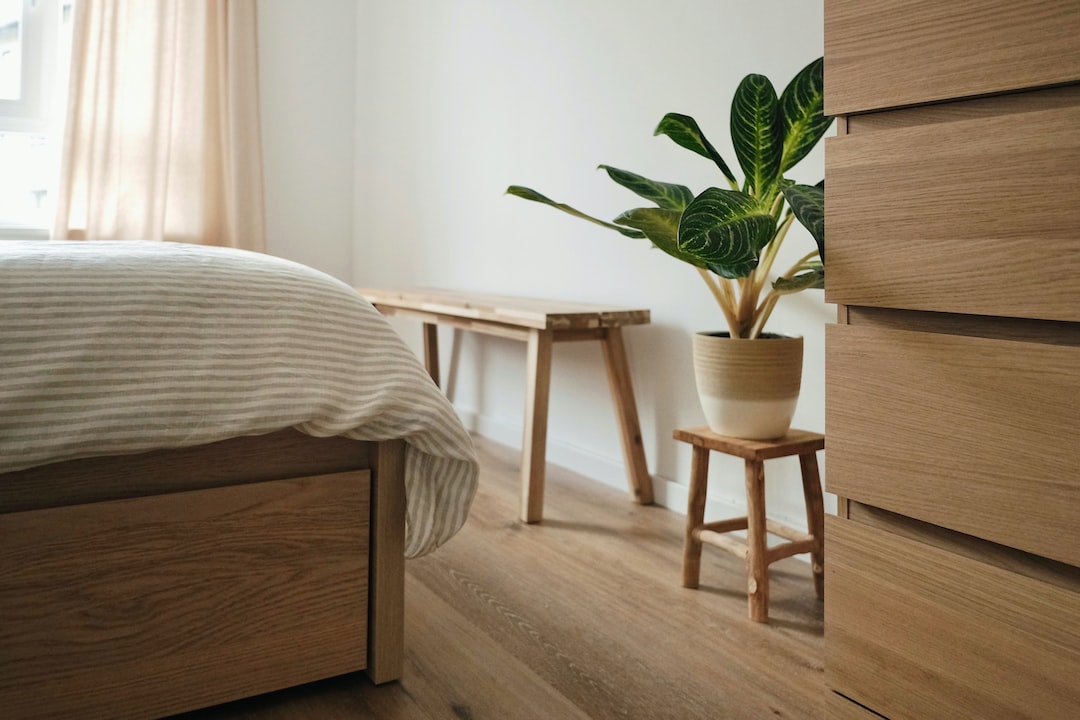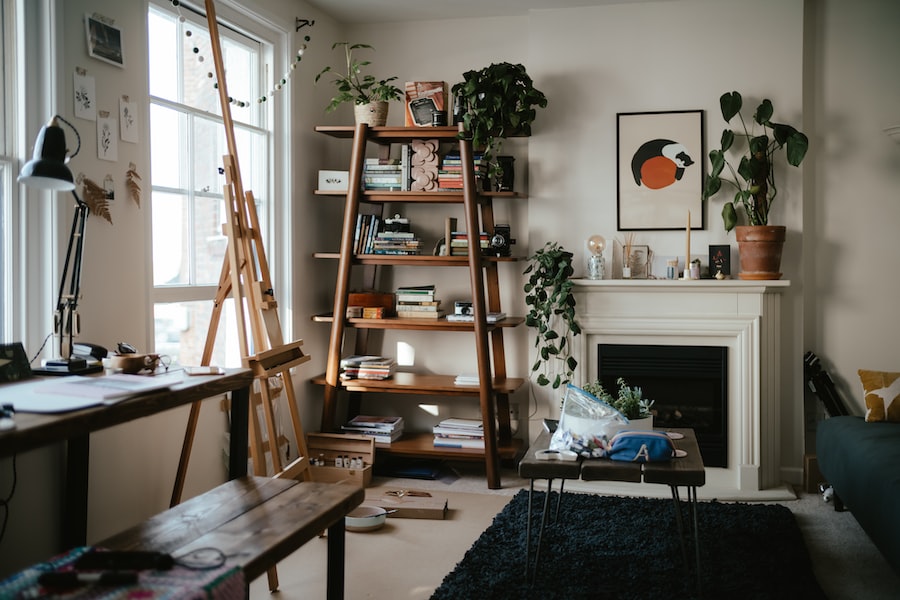Get a Head Start on Gardening: When to Start Seeds Indoors in Zone 6

Gardening in Zone 6 can be a rewarding and fulfilling experience. This zone, which covers parts of the United States and Canada, is known for its distinct climate and weather patterns. Understanding the basics of gardening in this zone is crucial for success, as it allows you to choose the right plants, start seeds at the appropriate time, and care for your garden throughout the growing season.
Key Takeaways
- Zone 6 is a region with a specific climate and soil type that affects gardening.
- Starting seeds indoors can give you a head start on the growing season and produce healthier plants.
- Choosing the right seeds for Zone 6 is crucial for a successful garden.
- Preparing your indoor seed starting space involves selecting the right containers, soil, and lighting.
- The ideal time to start seeds indoors in Zone 6 is 6-8 weeks before the last frost date.
Understanding Zone 6: The Basics of Gardening
Zone 6 is characterized by its moderate climate, with cold winters and warm summers. The average minimum temperature in this zone ranges from -10°F to 0°F (-23°C to -18°C), making it important to choose plants that can withstand these temperatures. Additionally, Zone 6 experiences a wide range of weather patterns, including heavy snowfall in the winter and hot, humid summers.
The soil types and conditions in Zone 6 can vary greatly. It is important to understand the composition of your soil and make any necessary amendments to ensure optimal plant growth. Common soil types in this zone include loam, clay, and sandy soil. Testing your soil’s pH level and nutrient content can help you determine what amendments are needed.
Common plants and vegetables grown in Zone 6 include tomatoes, peppers, cucumbers, lettuce, carrots, and beans. These plants thrive in the moderate climate and can withstand the temperature fluctuations that occur in this zone.
The Benefits of Starting Seeds Indoors
Starting seeds indoors is a popular practice among gardeners in Zone 6. There are several benefits to starting seeds indoors rather than directly sowing them in the garden.
One of the main benefits is cost savings. Starting seeds indoors allows you to grow a larger variety of plants at a fraction of the cost of buying seedlings or mature plants from a nursery. Additionally, starting seeds indoors gives you greater control over growing conditions such as temperature, humidity, and light. This can result in healthier, stronger plants that are more likely to thrive once they are transplanted outdoors.
Another advantage of starting seeds indoors is the ability to start plants earlier in the season. By starting seeds indoors, you can get a head start on the growing season and have larger, more established plants to transplant outdoors when the weather is suitable.
Choosing the Right Seeds for Zone 6
| Seed Type | Days to Maturity | Planting Depth | Spacing | Germination Temperature |
|---|---|---|---|---|
| Carrots | 70-80 | 1/4 inch | 2-3 inches | 45-85°F |
| Tomatoes | 70-80 | 1/4 inch | 2-3 feet | 70-85°F |
| Peppers | 70-80 | 1/4 inch | 18-24 inches | 70-85°F |
| Broccoli | 50-70 | 1/4 inch | 18-24 inches | 45-85°F |
When starting seeds indoors in Zone 6, it is important to select seeds that are suited for the climate and soil conditions in this zone. Look for seed varieties that have been specifically bred for colder climates and can withstand temperature fluctuations.
Some recommended seed varieties for Zone 6 include Early Girl tomatoes, Provider bush beans, Black Beauty zucchini, and Buttercrunch lettuce. These varieties have been proven to perform well in this zone and are more likely to produce a successful harvest.
Preparing Your Indoor Seed Starting Space
Before you start planting seeds indoors, it is important to choose the right location for your seed starting area. Look for a space that receives ample sunlight or invest in grow lights to provide the necessary light for seed germination and growth. The area should also be well-ventilated to prevent mold and disease.
Gather all the necessary supplies and equipment before you start planting seeds. This includes seed trays or pots, a seed starting mix, labels, a watering can or spray bottle, and any additional tools or equipment you may need.
Set up your indoor seed starting area by arranging your seed trays or pots on a flat surface. Fill them with a seed starting mix, which is a lightweight soilless mix that provides good drainage and aeration for young seedlings. Label each tray or pot with the name of the plant and the date it was planted.
The Ideal Time to Start Seeds Indoors in Zone 6

The timing for starting seeds indoors in Zone 6 can vary depending on the specific plant and the desired transplant date. As a general rule, most seeds should be started indoors 6-8 weeks before the last expected frost date in your area.
Factors to consider when determining the best time to start seeds include the plant’s growth rate, the length of the growing season, and any specific requirements for that particular plant. Some plants, such as tomatoes and peppers, require a longer growing season and should be started earlier, while others, like lettuce and radishes, can be started later.
How to Plant Seeds Indoors for Optimal Growth
Planting seeds indoors requires careful attention to detail to ensure optimal growth and germination. Follow these steps for successful seed starting:
1. Moisten the seed starting mix before filling your trays or pots. This will help ensure even moisture distribution throughout the soil.
2. Plant seeds at the recommended depth, which is usually 2-3 times the diameter of the seed. Larger seeds may need to be planted deeper.
3. Cover the seeds with a thin layer of seed starting mix or vermiculite to help retain moisture.
4. Water the trays or pots gently after planting to settle the soil and provide moisture for germination.
5. Place a clear plastic dome or plastic wrap over the trays or pots to create a mini greenhouse effect and retain moisture.
6. Place the trays or pots in a warm location with adequate light or under grow lights. Maintain a consistent temperature of around 70°F (21°C) for optimal germination.
Caring for Your Indoor Seedlings
Proper care is essential for the health and growth of your indoor seedlings. Here are some tips for caring for your seedlings:
1. Water your seedlings regularly, keeping the soil evenly moist but not waterlogged. Avoid overwatering, as this can lead to root rot and other diseases.
2. Fertilize your seedlings with a diluted liquid fertilizer once they have developed their first set of true leaves. Follow the instructions on the fertilizer packaging for proper dilution rates.
3. Monitor your seedlings for pests and diseases. Common pests that can affect indoor seedlings include aphids, fungus gnats, and spider mites. If you notice any signs of pests or diseases, take appropriate measures to control and eliminate them.
4. As your seedlings grow, they may need to be transplanted into larger pots to allow for root development. This is especially important for plants with deep root systems, such as tomatoes and peppers.
Transplanting Seedlings Outdoors in Zone 6
Once the weather has warmed up and all danger of frost has passed, it is time to transplant your seedlings outdoors. The timing for transplanting seedlings in Zone 6 can vary depending on the specific plant and the weather conditions.
As a general guideline, most seedlings should be transplanted outdoors when they have developed 2-4 sets of true leaves and are strong and healthy. Harden off your seedlings by gradually exposing them to outdoor conditions over a period of 7-10 days before transplanting.
When transplanting seedlings, dig a hole that is slightly larger than the root ball of the seedling. Gently remove the seedling from its pot, being careful not to damage the roots, and place it in the hole. Backfill the hole with soil, firming it gently around the base of the plant.
Protecting Your Plants from Frost and Cold Weather
In Zone 6, frost and cold weather can pose a threat to your plants, especially in the early spring and late fall. To protect your plants from frost and cold weather, consider using some of the following tools and techniques:
1. Cover your plants with frost blankets or row covers. These lightweight fabrics provide insulation and protection from frost and cold temperatures.
2. Use cloches or individual plant covers to protect vulnerable plants. These can be placed over individual plants or small groups of plants to create a mini greenhouse effect and trap heat.
3. Mulch around the base of your plants to help insulate the soil and protect the roots from freezing temperatures.
4. Consider using cold frames or hoop houses to extend the growing season and provide additional protection for your plants.
Tips for a Successful Garden in Zone 6
To ensure a successful garden in Zone 6, it is important to follow these tips:
1. Proper soil preparation is key. Test your soil’s pH level and nutrient content and make any necessary amendments to ensure optimal plant growth.
2. Choose plants and vegetables that are well-suited for Zone 6. Some recommended plants for this zone include daylilies, hostas, coneflowers, and asters.
3. Maintain a healthy garden throughout the growing season by watering regularly, fertilizing as needed, and monitoring for pests and diseases.
4. Consider using organic gardening practices to minimize the use of synthetic chemicals and promote a healthy ecosystem in your garden.
Gardening in Zone 6 can be a rewarding and enjoyable experience. By understanding the basics of gardening in this zone, starting seeds indoors, choosing the right seeds, and caring for your plants throughout the growing season, you can create a thriving garden that will provide you with fresh produce and beautiful flowers year after year. So don’t hesitate to start your own indoor seedlings and garden in Zone 6 – you won’t be disappointed!



